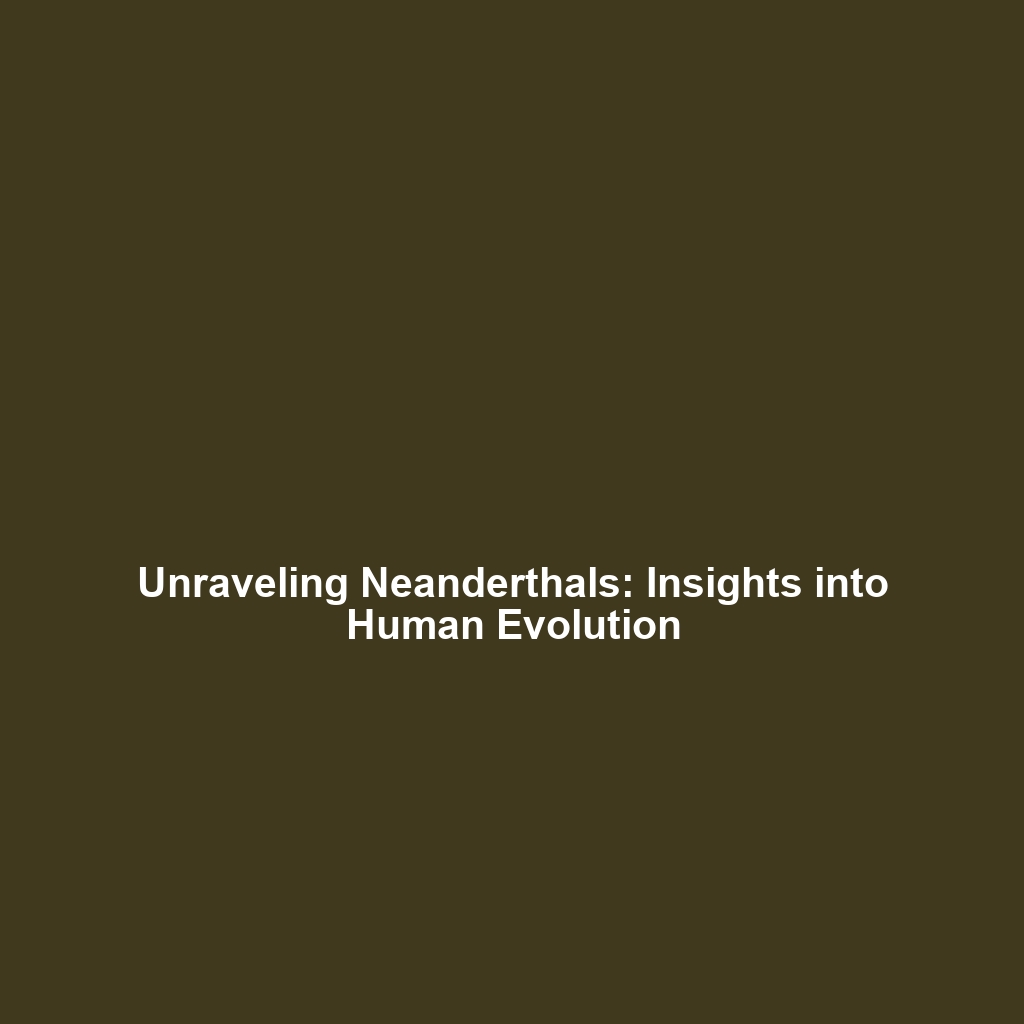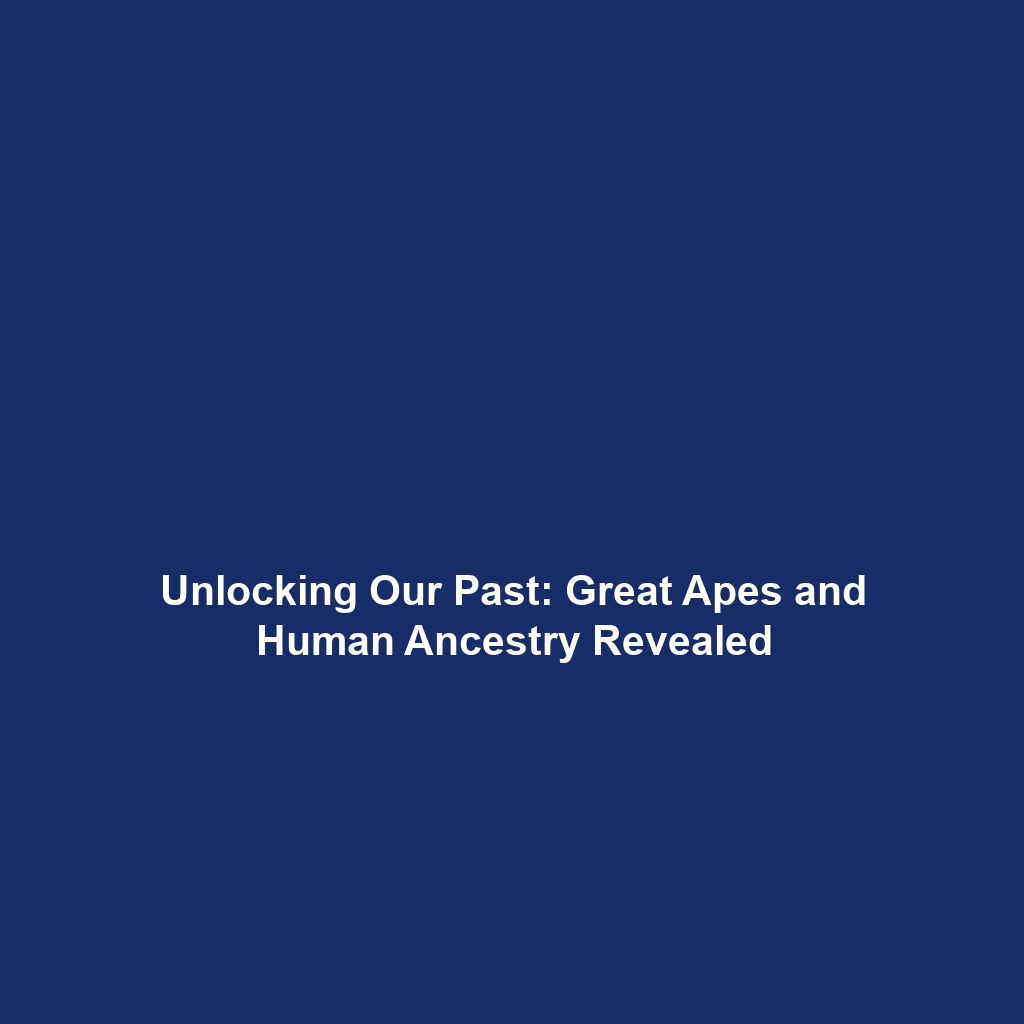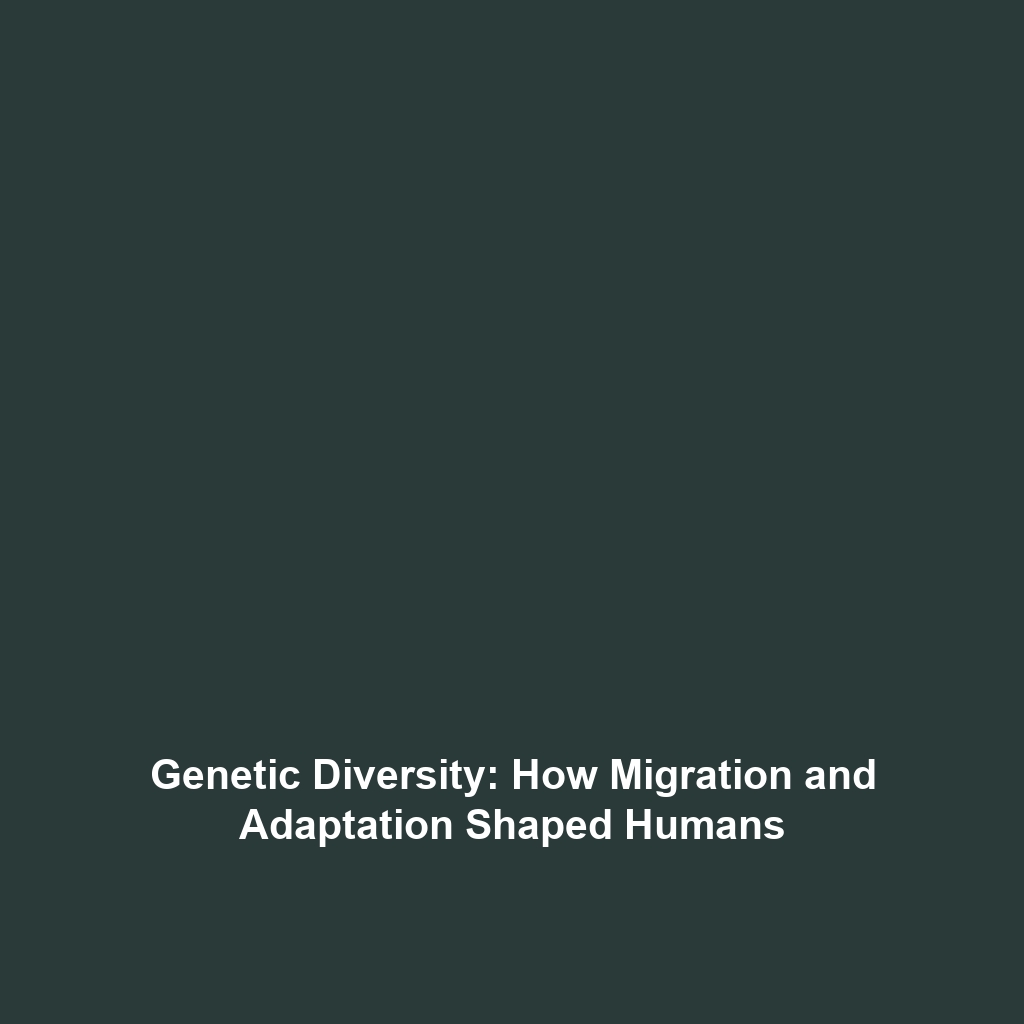Homo neanderthalensis: Insights into Human Evolution
Homo neanderthalensis, commonly referred to as Neanderthals, played a crucial role in the tapestry of human evolution. These ancient relatives of modern humans not only provide insights into our past but also challenge our understanding of what it means to be human. As we explore the significance of Neanderthals within the broader context of Human Evolution, we uncover various aspects of their life, culture, and interaction with early Homo sapiens. This article delves into the key concepts, applications, challenges, and future research surrounding Homo neanderthalensis.
Key Concepts of Homo neanderthalensis
Neanderthals were a species that thrived in Europe and parts of Asia from approximately 400,000 to 40,000 years ago. Understanding the following key concepts helps illuminate their place in Human Evolution:
Physical Characteristics
Neanderthals had a robust physique, shorter limbs, and a larger skull than modern humans, adaptations that were suited to their cold environments. Their features were instrumental in their survival, demonstrating evolutionary adaptations to climate.
Cultural and Technological Achievements
Neanderthals exhibited complex behaviors, including tool-making, symbolic art, and burial practices. Their ability to create sophisticated tools not only highlights their intelligence but also signifies an important evolutionary step toward modern human behavior.
Applications and Real-World Uses of Homo neanderthalensis
The study of Homo neanderthalensis has profound applications in understanding Human Evolution:
- Genetic Research: Insights from Neanderthal DNA have transformed our understanding of human genetics and migration patterns.
- Anthropological Studies: Examining Neanderthal behaviors sheds light on social structures and culture in prehistoric times.
- Evolutionary Biology: Neanderthals help researchers explore the evolutionary branches between ancient humans and modern Homo sapiens.
Current Challenges of Studying Homo neanderthalensis
Despite significant advances, several challenges remain in the study of Neanderthals:
- Limited Fossil Record: The scarcity of well-preserved Neanderthal fossils constrains our understanding of their biology and behavior.
- Interpretation of Evidence: Differentiating between Neanderthal and modern human artifacts can lead to misinterpretations.
- Public Misconceptions: Misunderstandings about Neanderthals often portray them as brutish, overshadowing their success as a species.
Future Research and Innovations
The future of research on Homo neanderthalensis promises to reveal more about their contribution to Human Evolution:
- Genomic Studies: Advances in genomic technologies may allow scientists to extract and analyze DNA from ancient remains, leading to a deeper understanding of genetic contributions to modern humans.
- Interdisciplinary Research: Collaborations across fields such as archaeology, genetics, and anthropology are poised to yield comprehensive insights into Neanderthal existence and their relationship with early humans.
- Innovative Dating Techniques: Developments in radiocarbon dating and other methods may improve the accuracy of timelines in Neanderthal studies.
Conclusion
Homo neanderthalensis remains a subject of great significance in the field of Human Evolution. By examining their characteristics, cultural contributions, and challenges faced in research, we gain a clearer picture of early human life. As we look towards future innovations and research developments, the legacy of Neanderthals continues to impact our understanding of humanity. For more information on related topics, check out our articles on Human Evolution and Homo sapiens.









